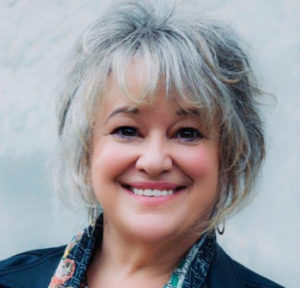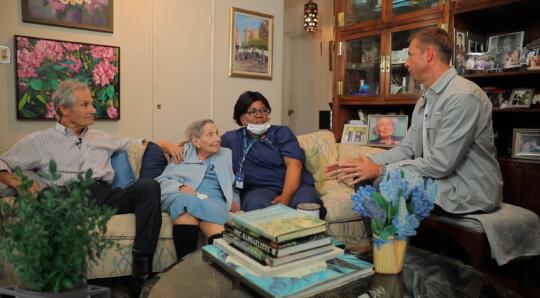The Partners in Care Education Department: Training the Front Lines in Challenging Times
Home health aides are invaluable. They’re the boots on the ground for providing assistance with activities of daily living to patients and plan members, and they’ve never been more needed than during these critical pandemic times. The Partners in Care Education Department provides the thorough instruction and support that ensures that all Partners in Care home health aides have the necessary skills to care for their patients.
 “The department goes beyond the New York State Department of Health’s education requirements,” says physical therapist Sonia Rapaport, a Rehabilitation Instructor with Partners in Care. “No matter what pops up—from Ebola to COVID-19—the Education Department has always been there. Everybody jumps as high as they need to jump to get all the HHAs caught up as quickly as possible.”
“The department goes beyond the New York State Department of Health’s education requirements,” says physical therapist Sonia Rapaport, a Rehabilitation Instructor with Partners in Care. “No matter what pops up—from Ebola to COVID-19—the Education Department has always been there. Everybody jumps as high as they need to jump to get all the HHAs caught up as quickly as possible.”
These days, they’ve never had to jump higher. The huge challenge with COVID, of course, has been that training has to turn on a dime, while also making sure that nothing—and nobody—slips through the cracks.
 “COVID-19 came in with a blast,” says Partners in Care Senior Instructor Gale Storm-Bryant. “We were in the midst of training when they shut down the city, so everything had to stop. The training had all been in-person—including in-service courses, training classes, and ongoing enrichment training. And then suddenly nothing… during a health crisis!”
“COVID-19 came in with a blast,” says Partners in Care Senior Instructor Gale Storm-Bryant. “We were in the midst of training when they shut down the city, so everything had to stop. The training had all been in-person—including in-service courses, training classes, and ongoing enrichment training. And then suddenly nothing… during a health crisis!”
While some specialized skills were taught via Zoom—bone-marrow-transplant training for a program with Memorial Sloan Kettering, for example—the vast majority of the department’s HHA training quickly transitioned to telephonic education, which involved thousands of individual phone calls to HHAs over a period of six weeks concerning the use of PPE. “On a good day, I might personally get in as many as 40 calls,” says Gale.
Top priorities included making sure that aides were receiving regular, updated instructions from VNSNY clinicians about pandemic protocols, as well as ensuring that they’d received their PPE and were up-to-date on safety precautions such as hand-washing technique, and even making sure that clients washed their hands—which might mean bringing a basin to their bedside.
 “We have always reviewed PPE, but we never had to focus on donning and doffing as we do now,” says Debbie O’Hehir, Director of Quality Management Services at Partners in Care. “We’re currently doing another round of phone calls educating aides regarding the use of face shields, as well as the requirement to wear eye protection any time they have direct patient contact, regardless of whether the patient is COVID-positive.”
“We have always reviewed PPE, but we never had to focus on donning and doffing as we do now,” says Debbie O’Hehir, Director of Quality Management Services at Partners in Care. “We’re currently doing another round of phone calls educating aides regarding the use of face shields, as well as the requirement to wear eye protection any time they have direct patient contact, regardless of whether the patient is COVID-positive.”
Naturally, in-person training is still needed for some skills, like the hands-on instruction for an aide working with her first Hoyer Lift patient—but the department has modified this process as well. “Now, instead of just dropping in for ongoing training, the aides come in for scheduled sessions in much smaller groups that allow for social distancing,” notes Debbie.
“We’ve always been committed to making sure our home health aides have compassion, competence, and confidence,” add Gale. “As people, we don’t all have the same skills, and one aide might not be as strong as someone else at a particular skill. But we are not going to stop working with you until you are confident in your skill level. And that hasn’t changed, even when COVID forced us to change how we worked.”
To read more VNSNY Heroes of 2020 stories, click here.


